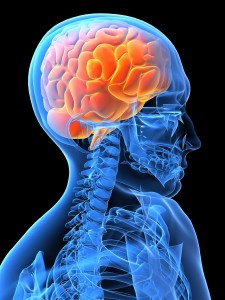 The 5 Ws – who, what, when, where and why are taught in journalism schools as well as in sales training to get across quickly what readers or prospects want to know in order to engage them. The five senses – sight, sound, smell, touch and taste are taking on new importance in customer experience content writing. Researchers are learning how interactions with the physical world influence our perceptions and how we respond.
The 5 Ws – who, what, when, where and why are taught in journalism schools as well as in sales training to get across quickly what readers or prospects want to know in order to engage them. The five senses – sight, sound, smell, touch and taste are taking on new importance in customer experience content writing. Researchers are learning how interactions with the physical world influence our perceptions and how we respond.
In his article Experience is the Next Frontier in Marketing published on Fast Company’s website, Jacob Braude shares insights on how cognitive science may help marketers manage their messaging and how companies may improve their customer experience. Experience is defined as physical interactions with the world. But it doesn’t end there.
Research on emotional processing and physical interaction support Braude’s ideas on how the brain codes experiences. Studies lead by Harvard graduate student Christopher Nocera and others report these observations about experience:
- People handling rough-surfaced puzzle pieces viewed a written passage as being more adversarial than those handling smooth puzzle pieces
- Harsher judgments were made by those given a wood block vs. those given a soft blanket
- Harder bargains were driven by study participants sitting in hard chairs vs. those sitting in soft chairs
- The weight of a clipboard holding a candidate’s resume influenced perceptions of the candidate’s qualifications.
While these observations relate to physical experience, content writing can convey what’s understood about the subconscious impact of the five major types of experience:
Sensory – Use language that includes sights, sounds, smells, touch and tastes. Of all the senses, smell is the strongest in evoking memory. Touch is the first sense to develop. Apparently, tactile sensations align with emotional qualities throughout life.
Action – Write about what a product does, not what it is. Using active verbs activates the brain.
Space – Relate to size and scale. Show photos in an uncluttered environment that allows a comparison to a common item.
Situations – Describe how the product is used and in what environment.
Impressions – Write clearly and concisely so the reader doesn’t have to use much effort to decipher the information.
As we learn more about how the brain works, the idea is not to manipulate but to find the right fit, solve problems and deliver a good customer experience. The five Ws will always be important to provide context. The five senses will play a role in the customer experience narrative.

One Comment on “Will 5 Senses Replace 5 Ws in Customer Experience Content Writing?”